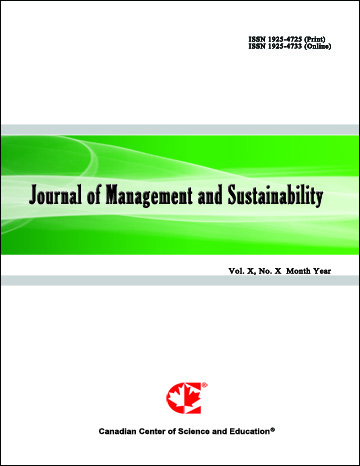Antecedents and Mediator of Turnover Intention amongst Employees in Private Communications Sector in Jordan: A Structural Equation Modeling (SEM) Approach
- Khaldoun Khawaldeh
- Ayed Muala
- Mamdouh Ziadat
Abstract
High employee turnover rate is a central problem in many organizations. This study’s aim is to examine therelationship among job satisfaction, organizational commitment, and turnover intention of employees. A model
of job satisfaction, organizational commitment, and turnover intention is developed and tested in one field study.
In this study, using a 150 employees of a Jordanian communications (Orange) company, were given
questionnaires to complete during regular working hours; 150 completed questionnaires were returned. Each
variable was measured using reliable developed scales: job satisfaction (5 items), adapted from (Yücel, 2012),
organizational commitment (12 items) by (Allen, & Meyer, 1990, 1993; Yücel, 2012), and turnover intention (3
items) by (Lance, 1988; Yücel, 2012). Data was input into SPSS and analyzed used Structural equation modeling
to test research hypotheses is used and the model that has high reliability and validity is developed. Amos
results indicate that there some hypotheses: results of this study were as follows: H1 show that: organizational
commitment was insignificant on turnover intention, and for H2 show that job satisfaction significant impact on
turnover intention. In addition, H3 show that the job satisfaction was insignificant on organizational commitment.
Finally, H4 show that the organizational commitment not mediates the relationship between job satisfaction and
turnover intention of employees.
- Full Text:
 PDF
PDF
- DOI:10.5539/jms.v4n3p135
Journal Metrics
Google-based Impact Factor (2021): 1.54
h-index (July 2022): 37
i10-index (July 2022): 147
h5-index (2017-2021): 12
h5-median (2017-2021): 19
Index
- Academic Journals Database
- ANVUR (Italian National Agency for the Evaluation of Universities and Research Institutes)
- CAB Abstracts
- CNKI Scholar
- EconBiz
- Excellence in Research for Australia (ERA)
- GETIT@YALE (Yale University Library)
- Harvard Library
- HeinOnline
- Infotrieve
- JournalTOCs
- LOCKSS
- MIAR
- PKP Open Archives Harvester
- RePEc
- Scilit
- SHERPA/RoMEO
- Stanford Libraries
- UCR Library
Contact
- Evelyn XiaoEditorial Assistant
- jms@ccsenet.org
